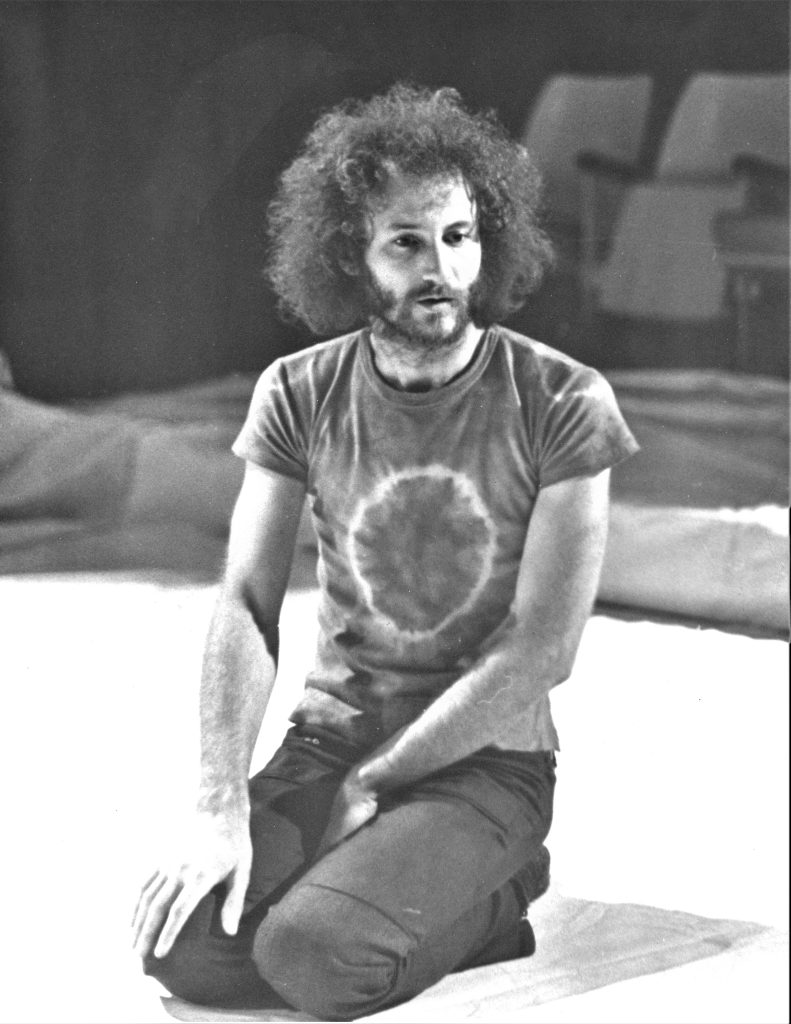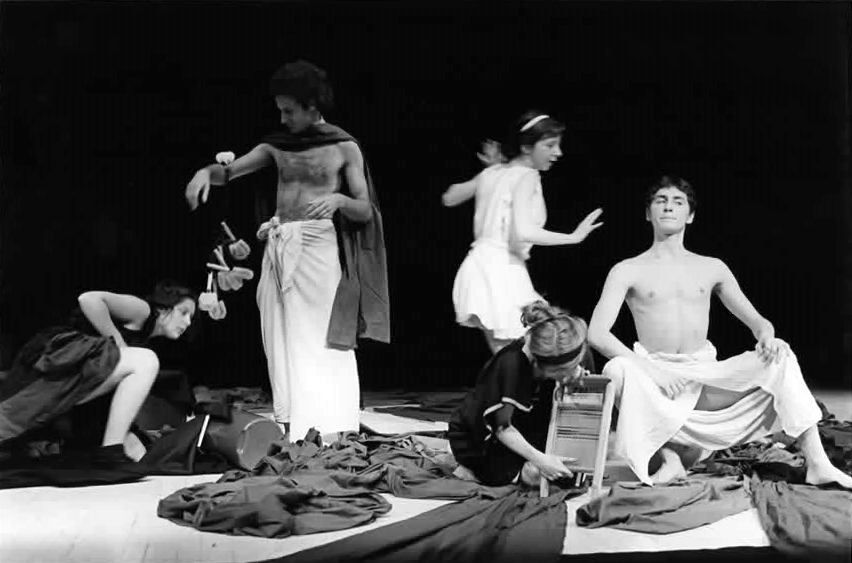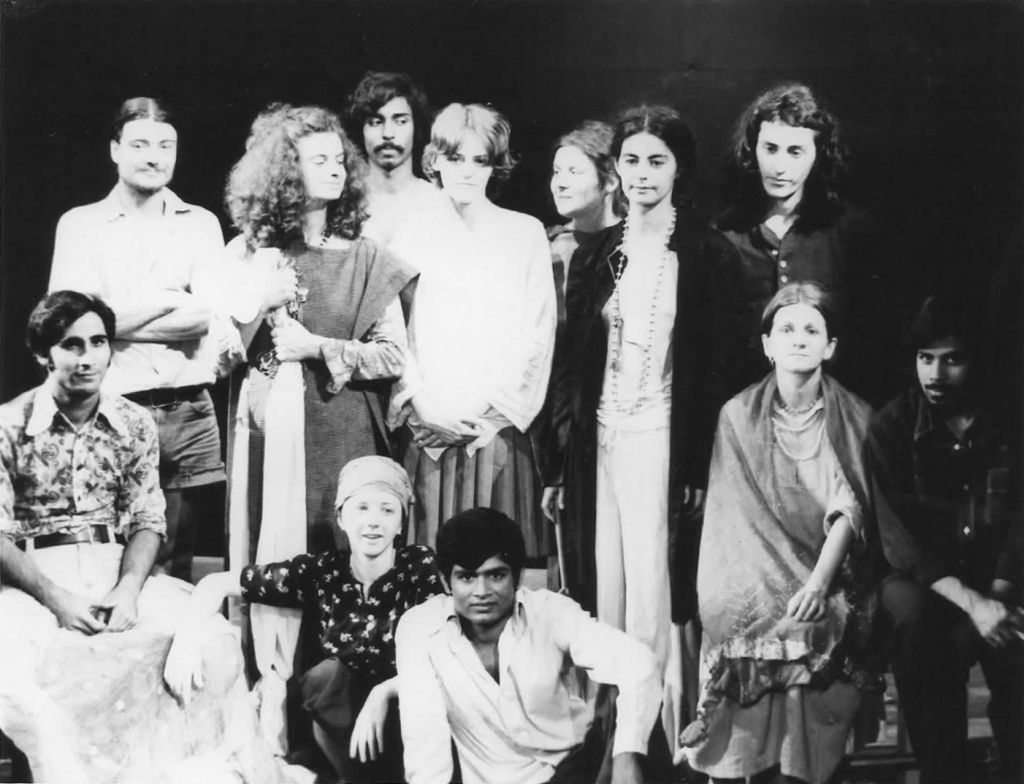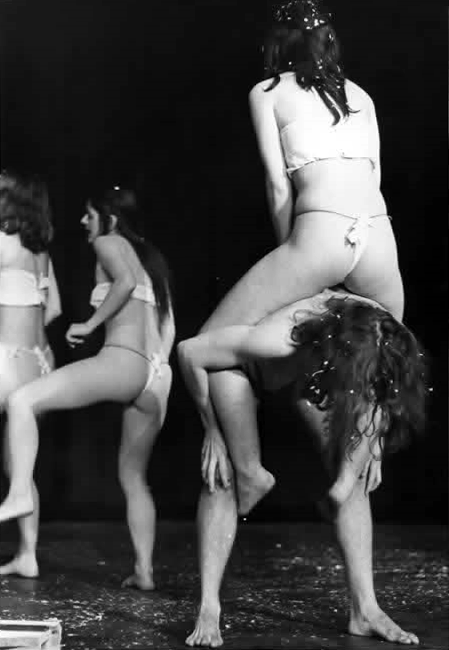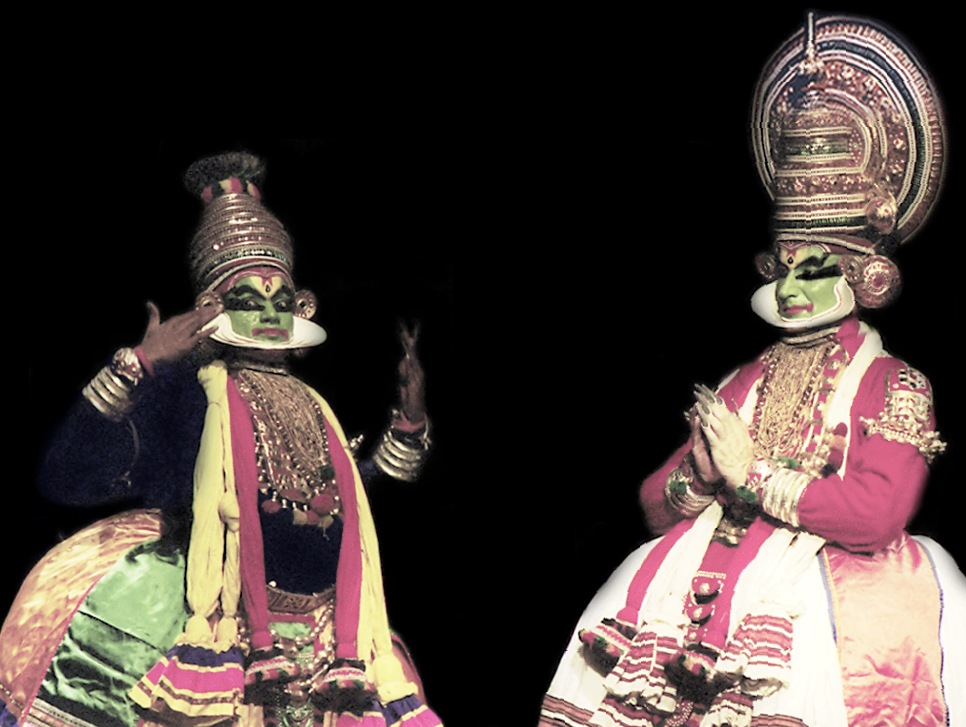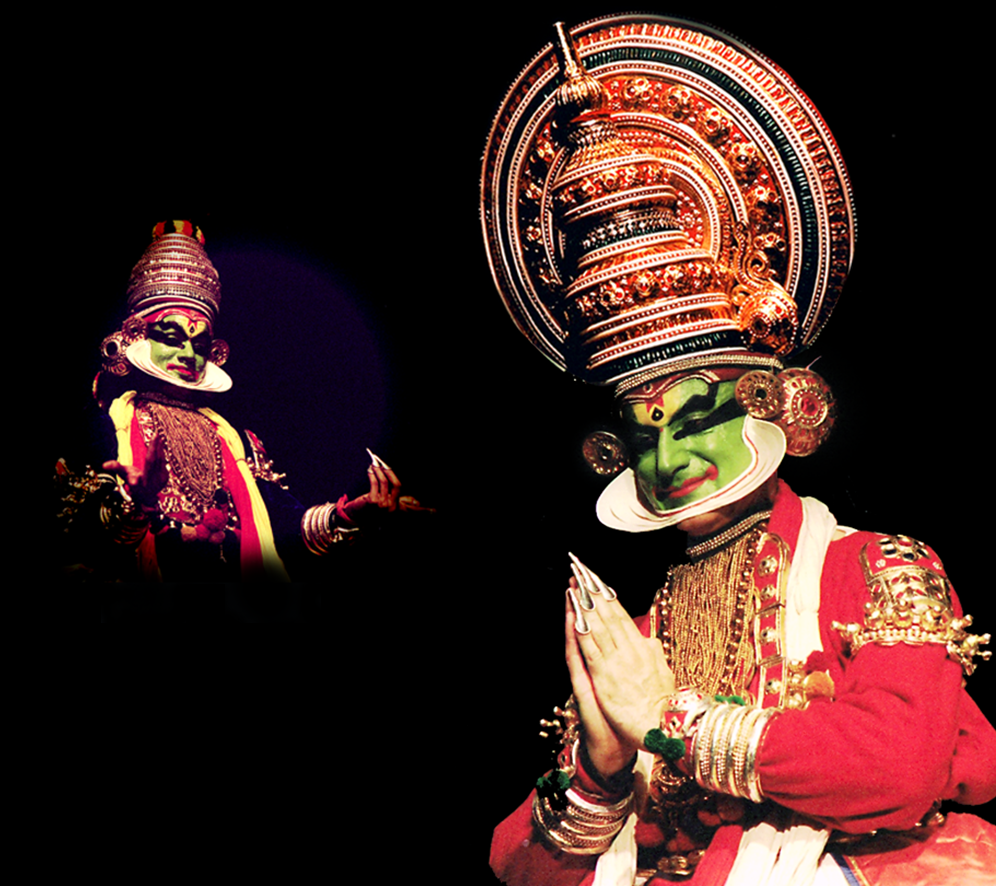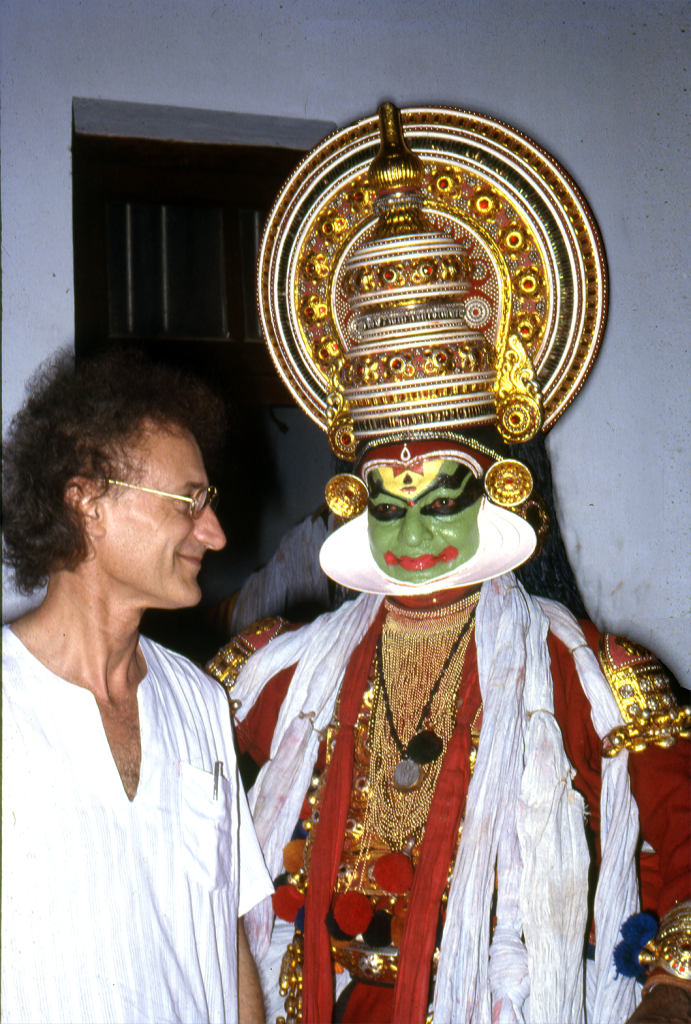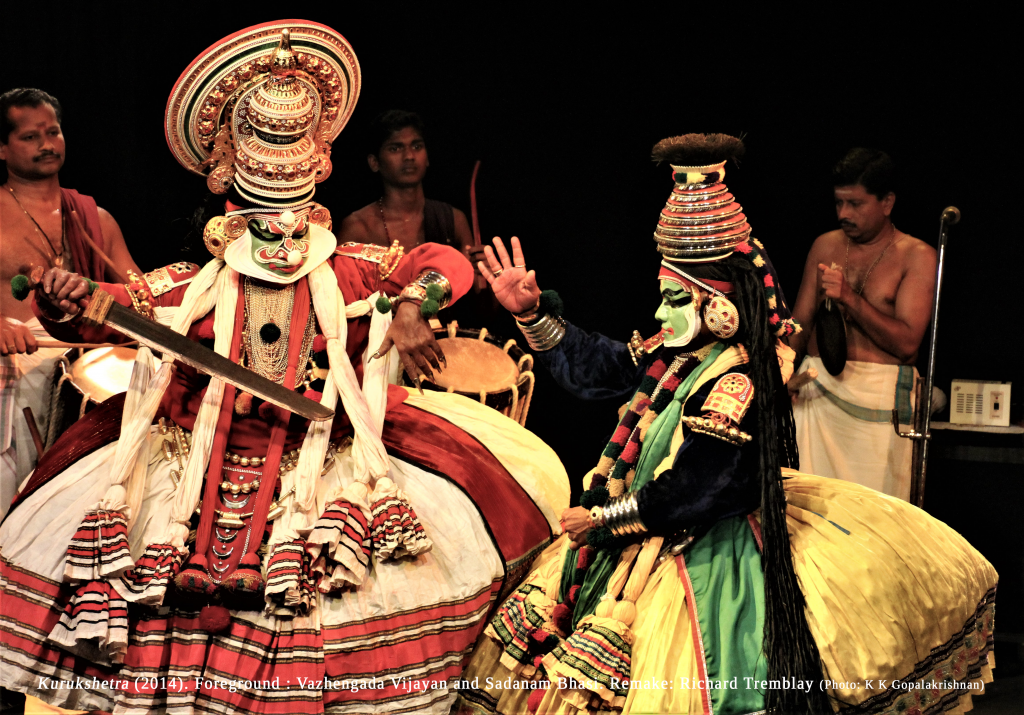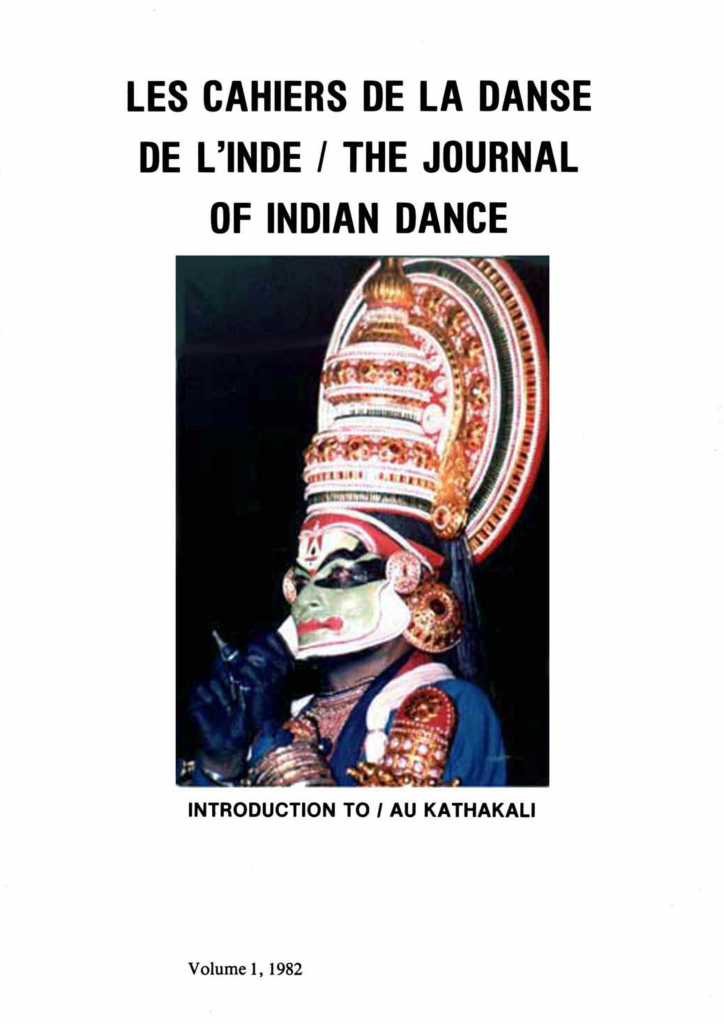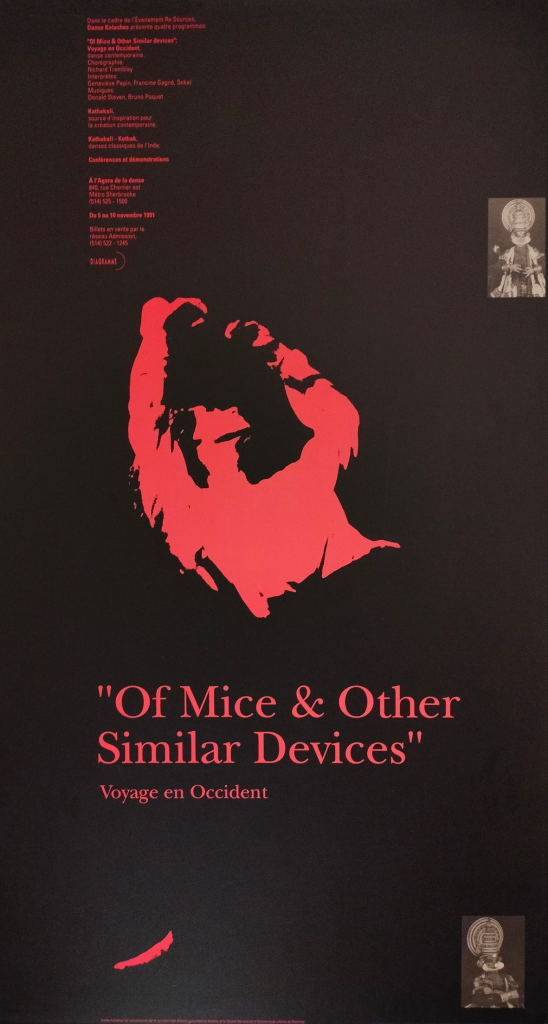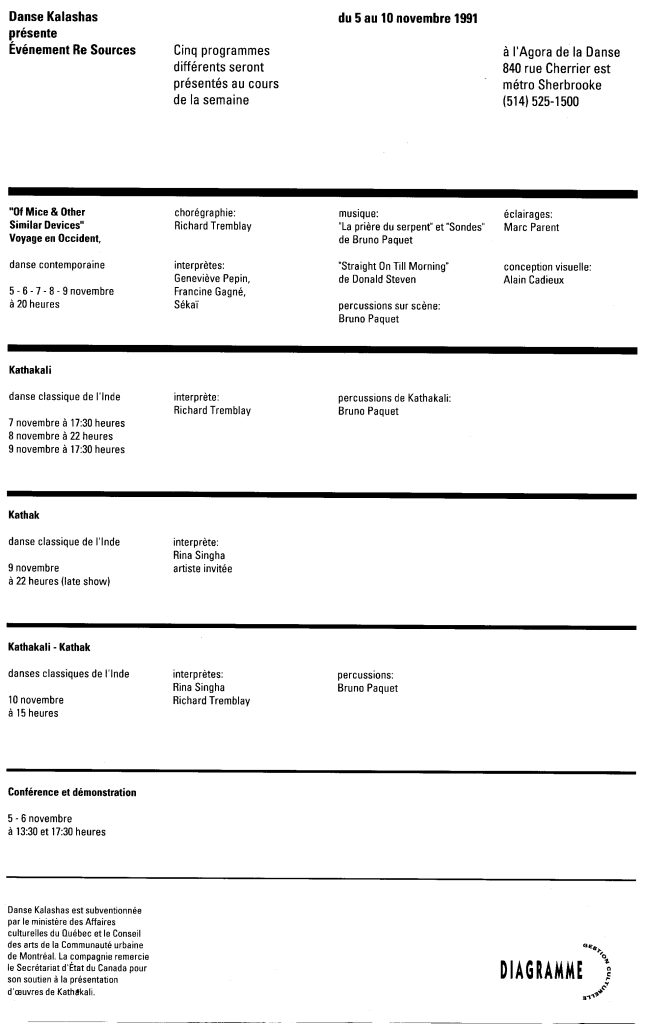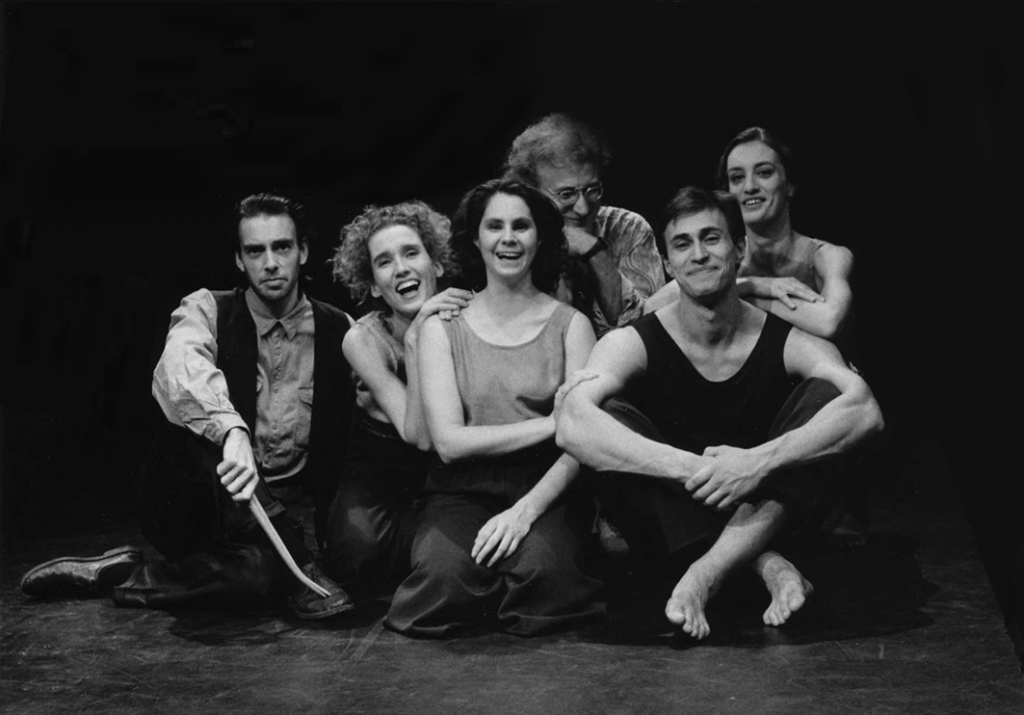The Kathakali Asian character dance and its percussion instruments were permanently introduced to Canada and North America in 1976 by choreographer Richard Tremblay and composer Bruno Paquet. As a percussionist, the latter joined this early implementation in 1985. Since then, these performers have made the Kathakali dance and music part of their creation process (Le Lion du Panjshir (2003) and In Himalayas, Prayer for a Rope, a Pope, And a Rogue (2003), for instance) in addition to their own presentation of the Kathakali repertoire. Richard Tremblay gave his first Kathakali performance in Kerala as a beginner with the Kathakali troupe in 1976, followed by a series of performances in Saguenay (Quebec) where he had set up a performance laboratory. He has danced since then in Victoria, Vancouver, Saskatoon, Winnipeg, Toronto, Ottawa, Montreal and Quebec City with K. Gopalakrishnan (1981 Canadian tour), K. Karunakaran in Toronto (1980) and the Indian national Kathakali company, Kalamandalam of Kerala, in Montreal (1981). Since 1984, Bruno Paquet and Richard Tremblay have presented little-known pieces from the repertoire, such as Gitopadesham, as well as Kathakali works of their own, such as Au Clair de la Lune (premiered in Montreal in 1985), Origines (Montreal, 1988 – 94-96), The Iliad or The Story of Achilles (Kerala, 1988 – 91-93) and Ulysse (Kerala, 1994).
An attempt to introduce Kathakali to Quebec and Canada had previously been made by a descendant of a family of gurus (gurukkula) from Kerala, who, in the early 1950s, lived for two years in a small apartment on Sherbrooke Street in Montreal, contributing to several concerts with his dance partner of Australian origin.
The company Le Groupe Téâtram (1974 – 81) emerged from the Théâtre Communal Contemporain (TCC, 1970 – 74), a collective directed by Richard Tremblay. The Téâtram Group (theater company) was the crucible of the choreographer’s early stage works in the choreographic theater. Soon, the choreographer became involved in a theatrical laboratory for the Kathakali dance-theater and the actor’s training as well as in the interpretation and creation of new works evolving over two decades towards his work at Danse Kalashas (1990- ), his dance company. Téâtram’s training program in physical theater enabled young performers to prepare for training in Kathakali and gave them the opportunity to take dance lessons in India, participating in the process of creating stage works during which some of them shared the intense moments of the life and work experience of the Group. Richard Tremblay’s main creations at Téâtram are: Rhinoceros (TCC /Centre d’animation théâtrale, 1971) after Ionesco’s, and presented at the Gésu theater, Montreal; Angel and Clementine (TCC, 1972), on texts from the ancient tragedy; Intermède (1974), choreographic theater, presented at the theater festival of the University of Quebec at Chicoutimi; and Madam’s Being Carried Away (1975), after Genet’s The Maids and a montage of texts by Racine and Euripides. The latter production was presented at the National Theater School of New Delhi and, in a reworked version, The Erinyes, at the New Theater Festival in Baltimore, in 1977. The Temptation of Saint Anthony (1980), adapted from Gustave Flaubert was Téâtram’s last production with a new team of actors. An offshoot of the German expressionism, the choreographic theater under Johann Kresnik (1929 – 2019) uses the text as a counterpoint to the dance. The Tanztheater Wuppertal, which has evolved its own style, is another branch of the same artistic movement. The Kathakali Institute and Danse Kathakali de Montréal (1981 – 90) followed Le Groupe Téâtram.
